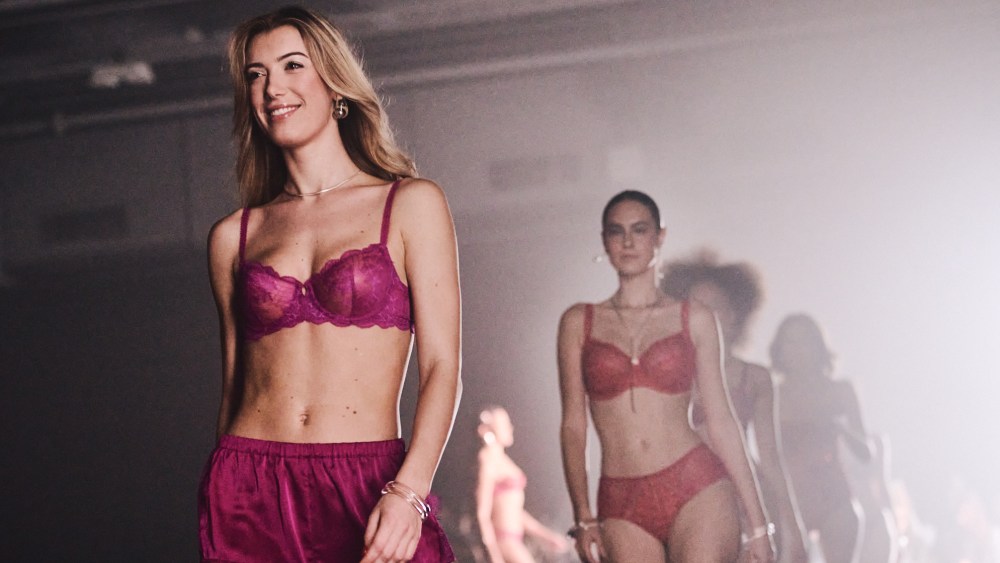Armchair travelers have been able to visit Edinburgh multiple times over the past 12 months thanks mainly to Netflix. They’ve gazed at the green grandeur of Arthur’s Seat, site of the wine-fueled picnics in “One Day,” and cringed as the plot of “Baby Reindeer” unfolded against the backdrop of the city’s comedy clubs and pubs.
In 2019, before Netflix came along, “Baby Reindeer” made its debut during one of the biggest moments on the city’s calendar, the Edinburgh Festival Fringe, while its creator Richard Gadd scooped the Edinburgh Comedy Award in 2016 for his multimedia performance “Monkey See Monkey Do.”
The Scottish capital is abuzz all year round, even in the dripping wet of winter, but it takes on a unique allure for three weeks in August during the culture-thon known as the Edinburgh Festival, which this year runs from Aug. 2 to 26.
The main attractions are the highbrow Edinburgh International Festival, which welcomes major dance, theater, opera and music companies, and its wilder cousin, the Edinburgh Festival Fringe, which has thousands of shows running virtually 24/7. Running alongside those events are film, art, and book festivals.
You May Also Like
During those three weeks the population of Edinburgh doubles in size as millions flock to performances across the city at venues that range from theaters and concert halls to bars, parks, buses, shipping containers — and sometimes just the street.

Getty Images
Each year hundreds of artists try to secure a venue — no matter what time of day or night — in the hope of being reviewed or discovered, and advertise their shows in earnest to passersby.
Gadd is one of many performers to have found fame at the Fringe, which has served as a launchpad for talents as diverse as Robin Williams, Steve Coogan, Miranda Hart, Rachel Weisz, Phoebe Waller-Bridge, David Tennant and Brian Cox.
“The exciting thing about the Fringe is that it’s not curated. You get good shows, but every now and again you get a real bummer. Maybe you’re only one of 10 people in the room, and it’s really, really not good. But that’s the fun price of going,” says Tari Lang, chair of Edinburgh’s Royal Lyceum Theatre, and board member of Creative UK, a not-for-profit that supports the creative industries.
Lang’s advice for those who plan to attend is to “go with the flow, and pace yourself. The shows start around 10:30 in the morning, with the last one probably starting at midnight. You could spend all day going to shows and you’d only see a small part of it.”
While the festival may be the main attraction in August, there is much to do and see in the Scottish capital, an ideal midsummer destination where the days seem to last forever. Here, some suggestions of what to see, where to wander, and what to eat and drink.
The Festivals
The Edinburgh International Festival is the city’s headline summer event, and this year the theme is “Rituals That Unite Us.” According to Nicola Benedetti, festival director, the aim is to “inaugurate new and reimagined rituals in a program that will bring artists and audiences closer than ever before.”

This year’s festival will include the world premiere of David Ireland’s latest play, “The Fifth Step,” a dark comedy about one man’s journey to getting sober, starring the BAFTA-nominated Scottish actor Jack Lowden.
International Theater Amsterdam is putting on a performance of Heinrich von Kleist’s “Penthesilea,” while “Carmen” will be performed by Paris’ Opéra-Comique. The latter will be among five operas being performed during the month.
The festival will also include a series of “beanbag concerts,” where guests can squish into their seats and listen to the Hallé Orchestra perform Mahler’s Fifth Symphony.
At another end of the musical spectrum, Natasha Khan, known as Bat for Lashes, will unveil new songs from her latest album, “The Dream of a Delphi,” which reflects her personal experience of becoming a mother.
Piano virtuoso Yuja Wang, meanwhile, will return to the festival for a solo recital of classical, Romantic, Impressionist and contemporary music.

The Fringe will host more than 3,000 events ranging from stand-up comedy to cabaret, experimental musical performances, and magic shows. Highlights are set to include comedy performers Lorna Rose Treen in a show called “Skin Pigeon,” Hannah Gadsby in “Woof,” and Gen Z star Ania Magliano in “Forgive Me, Father.”
Theater shows include performances such as Suzanne Andrade’s “Please Write Back” and Duncan Macmillan’s “Every Brilliant Thing,” both of which are based on the actors’ childhood experiences.
Beyond the festivals: What to do any time of year
Edinburgh is a delight all year round. Unmissable sights are the Palace of Holyroodhouse, which the British royal family still uses as its official residence when in the city. It is located at the bottom of Edinburgh’s Royal Mile, the grand thoroughfare in the heart of the Old Town.
At the other end of the bustling street is Edinburgh Castle, which has served over the centuries as a royal residence, prison, arsenal and mint.

Behind Holyroodhouse is the 640-acre Holyrood Park, and Arthur’s Seat, where the characters Emma and Dexter from “One Day” lolled, drank wine, bickered — and fell for each other.
It’s quite a hike up that hill (an ancient volcano) to the summit, and those who make it to the top certainly earn those bottles of beer and rosé. The journey to the summit takes around two hours, but the payback is rich, with views of the Edinburgh skyline, the Royal Mile, and the shoreline of the Firth of Forth, the estuary that flows into the North Sea.

Edinburgh is also home to the Scottish National Galleries, a cluster of museums housing art from across the centuries.
The National Gallery features works by Titian, Rembrandt, Velázquez and the Impressionists as well as Scottish art from 1800 to 1945. Modern One and Modern Two house 20th century and contemporary works.
Modern Two is a must-see as it houses the Scottish artist and sculptor Eduardo Paolozzi’s Chelsea, London, studio, which has been recreated down to the last mote of dust. The artist’s bunk bed is in there, too, alongside a jumble of sculptures, models, books and toys which Paolozzi donated to the museum.
Where to Eat
Edinburgh is home to cuisine from around the world, a reflection of the many immigrant waves that have washed over the city during the past 150 years. There are Italian restaurants galore, and the most famous among them is Valvona & Crolla, a delicatessen, wine merchant, café, and restaurant.
In August, Valvona & Crolla creates space for a 70-seat theater for the Fringe.

Locals’ favorites also include The Khukuri, which serves regional Nepalese classics and Nepali thali. Baba, meanwhile, specializes in Middle Eastern and Mediterranean mezze, charcoal-grilled dishes, and fusion cocktails. The Pomegranate New York Sour blends Glenmorangie Lasanta whisky, lemon and Shiraz gin, while the Normandy Mule is a mix of Calvados, ginger beer, and molasses.

For those who favor finer dining there’s Rhubarb Restaurant at Prestonfield House, a five-star hotel owned by the restaurateur and hotelier James Thomson. Rhubarb serves dishes brimming with local produce, such as rump of Scotch Angus beef; cock-a-leekie soup (a Scottish national dish), and a cheese plate stacked with St. Andrew’s Farmhouse Cheddar, Ayrshire Dunlop, and Hebridean Blue.
Where to Shop, and Wander
Edinburgh, a hub of banking, financial services, tech and tourism, has long been a prosperous city, with stores and upscale neighborhoods to match. Harvey Nichols has a vast and fabulous food hall overlooking St. Andrew Square, and sits near Louis Vuitton, which is also located on the garden square in Edinburgh’s New Town.
A short walk from St. Andrew Square are the newly opened Shops at St. James’s Quarter, which include H Beauty, Space NK, Aēsop, Breitling, and John Lewis.

The city’s different neighborhoods are a trove of furniture, fashion and design shops as well as artisanal food stores and restaurants.
Leith, on the northern edge of town, was once Scotland’s main trading port and made up much of the backdrop of the film “Trainspotting,” based on the novel by Irvine Welsh. Over the years the neighborhood has smartened up, with restaurants including Ship on the Shore, Borough, and The Kitchin. Founded by chef Tom Kitchin and his wife Michaela, the restaurant has earned a Michelin star for its French spin on homegrown Scottish food.

Closer to the center of town is Stockbridge, which is all cobbled streets, Georgian architecture, parks and gardens. The main street is lined with indie wine and cheese shops as well as an artisanal butcher, greengrocer, and fishmonger.
Stockbridge is also home to the Royal Botanic Garden, which dates to the 17th century; Inverleith Park, and the Water of Leith Walkway, a lush, 13-mile path that will offer welcome respite to exhausted festival-goers.




